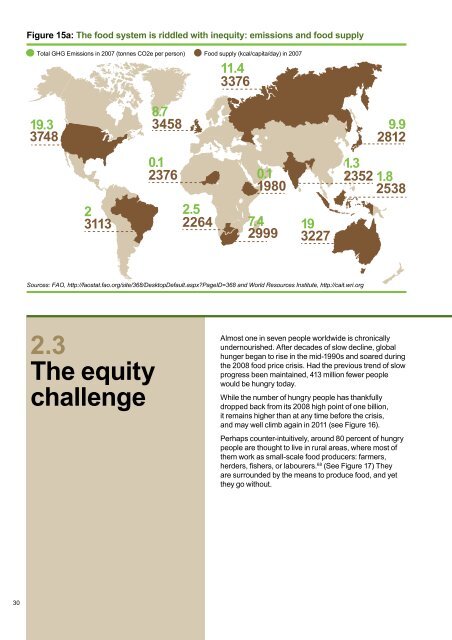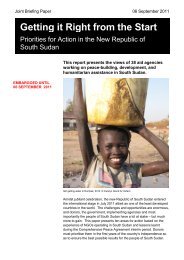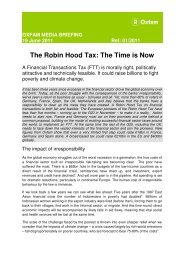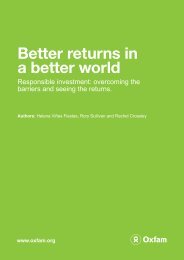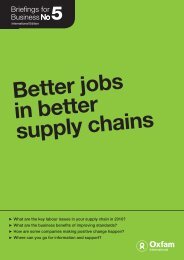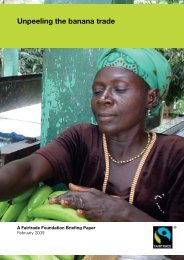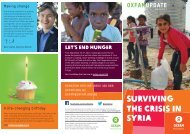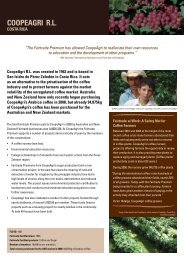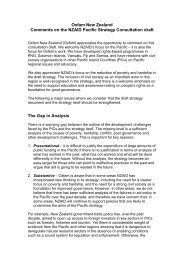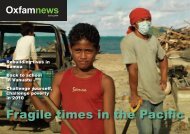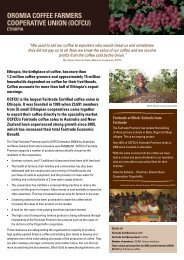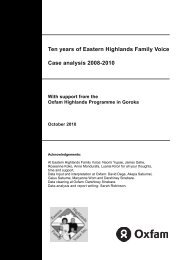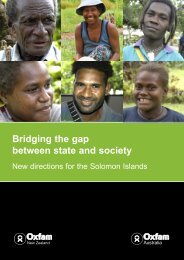Growing a Better Future - Oxfam International
Growing a Better Future - Oxfam International
Growing a Better Future - Oxfam International
- No tags were found...
You also want an ePaper? Increase the reach of your titles
YUMPU automatically turns print PDFs into web optimized ePapers that Google loves.
Figure 15a: The food system is riddled with inequity: emissions and food supplyTotal GHG Emissions in 2007 (tonnes CO2e per person) Food supply (kcal/capita/day) in 200711.4337619.337488.734589.928120.123760.119801.32352 1.82538231132.522647.42999193227Sources: FAO, http://faostat.fao.org/site/368/DesktopDefault.aspx?PageID=368 and World Resources Institute, http://cait.wri.org2.3The equitychallengeAlmost one in seven people worldwide is chronicallyundernourished. After decades of slow decline, globalhunger began to rise in the mid-1990s and soared duringthe 2008 food price crisis. Had the previous trend of slowprogress been maintained, 413 million fewer peoplewould be hungry today.While the number of hungry people has thankfullydropped back from its 2008 high point of one billion,it remains higher than at any time before the crisis,and may well climb again in 2011 (see Figure 16).Perhaps counter-intuitively, around 80 percent of hungrypeople are thought to live in rural areas, where most ofthem work as small-scale food producers: farmers,herders, fishers, or labourers. 68 (See Figure 17) Theyare surrounded by the means to produce food, and yetthey go without.30


